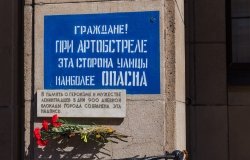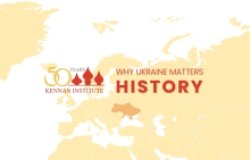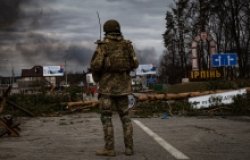236. Between Hungary and Romania: The Case of the Southern Transylvania's Jews During the Holocaust
The Stoppage of Deportations to Nazi Extermination Camps, 1941-1942
The tragedy of the Jews of Banat and Southern Transylvania was different from that of the Jews of the Old Kingdom of Romania. The dictatorial regimes of King Carol II and Marshall Ion Antonescu did not recognize the civil rights granted by the 1923 Constitution. The Jews were discriminated against on the basis of the historical regions in which they lived. The pretexts of the authorities were that: the Jews of Transylvania did not participate in the Romanian War of Independence (deliberately ignoring the fact that in 1877 they were citizens of the Austro-Hungarian Empire); did not fight in the Balkan Wars of 1912- 1913; did not take part in the unionist propaganda; did not integrate into Romanian culture; and, many of them used Hungarian as a language of communication and culture.
The new legal policy, dictated by the governments of King Carol II and Marshall Ion Antonescu, discriminated against the Jews of Transylvania and Banat, among other groups, on the basis of citizenship. Moreover, it confirmed the intention to apply a "detailed plan" of deportation of the Jews from the above-mentioned areas (The Archive of the Jewish Communities of Timisoara, Doc. 76-78, 1943). Negotiations for these deportations began in November 1941 and were resumed in the spring and summer of 1942. All attempts to persuade the authorities to change this policy failed. An existing prejudice towards Jews as an ethnic group - according to which the Jews of Southern Transylvania could become spies or betray the Romanian interests as speakers of Hungarian and German - played an important role in the hostility against them.
The panic of the Jewish population had real motivations. All orders coming from Bucharest proved that there was an agreement between Germany and Romania concerning the deportation of the Jewish population to Poland. Preparations were made in Arad, Timisoara and Turda. These were border towns of Romania at that time, where important groups of Hungarian language speakers lived, including Jews. The representatives of the local offices of the Jewish Head Office were instructed to make up lists of the Jewish population according to their gender, age, and professions. Ion and Mihai Antonescu had signed the agreement on the deportation of the Jews from Arad, Timisoara, and Turda after a succession of discussions and agreements with the German authorities.
During his visit to Berlin, where details of this deportation were to be settled, Radu Lecca - the Romanian commissar in charge of Jewish affairs - was arrogantly treated by the German Minister of Foreign Affairs. Consequently, he delayed implementation of the plan. Due to this, Germany could not begin the transportation of the Romanian Jews to Poland. The rapid execution of the plan was also impossible because the Nazi concentration camps had not been prepared during the early stages of the war, although Hitler himself had planned the "Final Solution." In historian Raul Hilberg's opinion, the Reich intended to take advantage of the haste with which the Romanian government had adopted radical measures against the Jews. This was the case with Transnistria, a reservation created by the Romanian government for the elimination of the Jews. (Raul Hilberg, The Destruction of the European Jews, Chicago: Chicago Quadrangle Books, 1967, 257-266).
Rumors of deportations started and the Jews in Banat and Southern Transylvania hurried to sell their furniture and jewels. Baron Franz von Neumann of Arad tried to oppose the deportations. Between 1938-1948, he became the main share- holder and manager of a textile manufacturing plant in Arad, one of the most important companies of its kind in Romania. Franz von Neumann was one of the few who opposed the discriminatory policy of the Antonescu regime; one of his first actions was to systematically reject the effort to Romanianize enterprises. (The Romanian National Archives. The Arad County Unit, Fund-Textile Plant, Doc.no.12, 1941, 14, 15, 23, 14, 32, 41, 54, 66, 77).
The German authorities in Bucharest signaled that the Baron's presence in Bucharest beginning in the autumn of 1941 was very dangerous, labeling him "the unfortunately famous Jew." It is very likely that during some of his trips to the capital, von Neumann drew the attention of the dignitaries of the regime. He spent huge amounts of money and uncovered the weak points of the Antonescu administration, among which was the deep level of corruption of his civil servants. Hilberg states that it was the Baron who offered a high official forty million lei, destined for the Romanian army. The aim was to cancel the deportation program of the Jews of Southern Transylvania. The question this incident raises is who was the money offered to and who was the liaison?
Von Neumann suggested contacting the Metropolitan Bishop Nicolae Balan, the Head of the Romanian Orthodox Church of Southern Transylvania, to intercede on behalf of the Jews. With the help of the high Orthodox prelate the cancellation of the deportation order was obtained. Franz von Neumann's gesture and success may be explained by several factors: his links with the United States, where his father had emigrated a long time ago; and the activity of the Clandestine Council of the Jews in Bucharest, where Chief Rabbi Alexander Safran had a similarly important role. It is known that King Michael, the Queen mother, the ambassador of Switzerland to Bucharest, delegates of the Red Cross, the papal nuntio, and the Chairman of the High Court of Justice were then also alarmed. (Alexandre Safran, Resisting the Storm. Romania 1939- 1947, Jerusalem: Yad Vashem, 1987, 55-77).
It was August 1942 when this crucial event in the history of the Jews of Southern Transylvania took place. Could they have been actions independent of each other, only known by the high governmental officials and Antonescu himself? My hypothesis is that the Romanian Metropolitan Bishop was in touch not only with the Rabbi Safran but also with Baron von Neumann and that he was the messenger for both parties to Antonescu.
Refugees from Hungary, 1944
With the deportation order for Southern Transylvania cancelled, some of the neighboring Jewish populations in Hungary, particularly those of Northern Transylvania, tried to save themselves by crossing the border to Romania.
The decision of the Hungarian government in 1944 to deport its Jews to the Nazi extermination camps became quickly known to the Jews in Northern Transylvania. Some of the Jews tried to save themselves by taking refuge in Southern Transylvania. Archival documents indicate many corridors used by refugees to cross to the Romanian side, such as: Cluj-Turda, Tinca in Bihor County, Curtici-Arad-Timisoara, and Nadlac-Arad. In the case of the refugees from Hungary to Southern Transylvania, the issue of granting transit permission through the Romanian regions was raised in order to permit them to later emigrate to Palestine.
The decision on admittance of refugees depended on the judgement of the local commanders. Typically, instructions received by the Army and the Police were periodically changed. Sometimes, local offices intervened on behalf of refugee protection and sometimes for their expulsion. Among the most radical opponents of accepting the refugee Jews were some Romanian officers and the leaders of the German ethnic groups in the border regions. In Turda, for instance, the collaboration of the chief of the Police Department Cornel Bradean, the commander of the Gendarmerie legion Gheorghe Craioveanu, and the leader of the German community Carol Krauss, blocked the refuge of eighteen Jews from Cluj on May 4, 1944. It was at the time when mass deportations had already started in Hungary and when the 18,000 Jewish community of Cluj could have been saved by letting them pass the frontier through the Cluj-Turda corridor. (Krauss's Trial, US Holocaust Memorial Museum Archive, Romanian Information Service records, 1936-1966, RG 25004M, Reel 42).
Both Wilhelm Filderman, the President of the Jewish Community of Romania, and the Chief Rabbi Alexandru Safran understandably demonstrated a special concern for the salvation of the Jews of Northern Transylvania and Hungary. In an exchange of correspondence with the prime-minister of the Romanian government, Filderman committed himself to assuring the necessary ships for the Jews coming from Hungary to leave Romania. In another letter addressed to Mihai Antonescu on June 27, 1944, Filderman suggested that the Minister of Interior ask the Army and Gendarmerie "to tolerate the crossing of the border of Jews coming from Hungary, even though they would not be provided with any document issued by either the Hungarian authorities or the Romanian ones." In the end analysis, in Romania, despite the efforts of many to save the Jewish population, the situation of the Jewish refugees from Hungary was poor: in August 1944, there were 710 Jews in Bucharest, 250 in Tirgu-Jiu, 120 in Arad, 80 in Timisoara and 30 in Turda. (Documents Concerning the Fate of the Romanian Jewry during the Holocaust, Volume VIII, Selected and edited by Jean Ancel, 78).
The humiliating living conditions of the Jews of Southern Transylvania, the discrimination they were subjected to as citizens, the anti-Semitic and racial decisions taken by the Antonescu regime, the deportation of some of the Jews to Transnistria, all contradict the interpretations given by Romanian nationalist-oriented historians. Hence a comprehensive historical understanding of Antonescu's dictatorship is essential to overcome the stereotypes and biases which continue to dominate a part of the cultural and political millieus of Romania. Any historian who has studied Romanian history however, can appreciate and understand the ambiguity of this country's policy towards the Jews. Even if the country was allied with the Third Reich against USSR, Romania was different from Germany regarding its policy towards the Jewish population.
Victor Neumann spoke at an EES Discussion on September 5, 2001. The above is a summary of his presentation. Meeting Report #236.
About the Author
Victor Neumann
Read More
Global Europe Program
The Global Europe Program is focused on Europe’s capabilities, and how it engages on critical global issues. We investigate European approaches to critical global issues. We examine Europe’s relations with Russia and Eurasia, China and the Indo-Pacific, the Middle East and Africa. Our initiatives include “Ukraine in Europe” – an examination of what it will take to make Ukraine’s European future a reality. But we also examine the role of NATO, the European Union and the OSCE, Europe’s energy security, transatlantic trade disputes, and challenges to democracy. The Global Europe Program’s staff, scholars-in-residence, and Global Fellows participate in seminars, policy study groups, and international conferences to provide analytical recommendations to policy makers and the media. Read more










